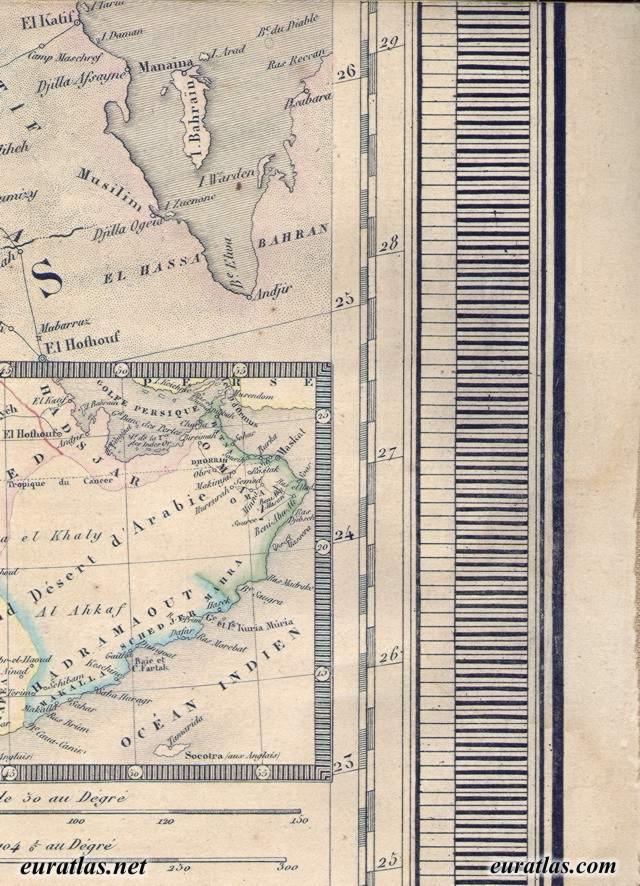Sykes-Picot Agreement of 1916 to Partition the Ottoman
Empire
"On May 9, 1916, a secret convention was made during WWI
between Britain and France, with the later assent of imperial Russian and
Italy, for the dismemberment of the Ottoman Empire. The essence of the
agreement—expansion of European colonialism into the heart of the Middle
East—never came to pass, thanks to the entry of the US into the war at the
start of 1918. The introduction of the Wilson Doctrine, which was intended to
create the Mandate System under the supervision of the League of Nations,
prevented the outright colonization of that region by the European Colonial
empires, which would have enhanced their power vis a vis the United States. The
agreement took its name from its negotiators, Sir Mark Sykes of Britain and
Grancois Georges-Picot of France,. The relevant portions of the accord are
provided above right.
It is unclear, however, where exactly the map purporting to
depict the divisions comes from (see one example below, dating to 1918, London,
and marked “secret”, and apparently later colorized), as the Agreement is far
from precise on boundaries. But, by referring to various divisions such as,
“Area A” or “Area B”, “Red Zone”, “Blue Zone” etc., the text of the agreement
predicates the existence of at least one appended map.
Be that as it may, excepting the area now comprising the
Republic of Turkey (take back by force of Turkish and Kurdish arms by 1923),
many of the borders found in the provisions of the Sykes-Picot Agreement are
generally, and sometimes precisely, the ultimate lines followed by current
international borders. By turning communist in 1917, Russia received none of
the anticipated awards. France, on the other hand, obtained the League of Nations
Mandate over Syria (which she later split into Lebanon and Syria); Britain over
Iraq, Jordan and Palestine. Ahsa and Qatif were ultimately relinquished to
Saudi Arabia.
Although many of the borders anticipated by the Sykes-Picot
were arbitrary, they were in fact more sympathetic to the religious and
cultural facts on the ground than what the League of Nations later created.
Under Sykes-Picot, the Shias (Shiites) were to be united into a super-state,
although directly ruled over by Britain. The Agreement meticulously included
the Shias of Mesopotamia and Ahsa - Qatif (coastal regions of modern Saudi
Arabia on the Gulf). The Christians in the Levant and south-central Anatolia
also saw the combination of their multitude into a single French-administered
Mediterranean state in which they were to form the predominant force, if not an
absolute majority. Had the Armenians not been exterminated from their Cilician exclave,
the entire French colony (the Blue Area) would have had a Christian majority.
The Sunni Muslims (Arabs, Kurds, Turks) and their interests, meanwhile, were
overlooked by Sykes-Picot. It is no surprise then that Turks and Kurds joined
forces to immediately challenge the divisions of their native land that were to
be implemented in the aftermath of WWI.
The Bolshevik revolutionaries of Russia made the provisions
of this secret agreement public on November 23, 1917 following their takeover
of that country. These are listed to the upper right hand of this map. A rather
detailed map is reconstructed here by taking into consideration the toponyms and
directions noted in the Agreement per se, but missing from all subsequent maps.
The Russian share, missing from the first draft of Sykes-Picot, is
reconstructed from the details found in a letter by Sir Edward Grey to Count
Alexander von Benckenkdroff of Russia, dated May of 1916.
To create this map, I have made the provisions of the
Agreement conform to the physical geography of the region—river courses, crests
of the mountains, bottoms of the valleys and wadis—to produce more precise
boundaries. Some current international boundaries match the lines of Sykes
Picot exactly. The modern borders are added in for the sake of clarity".






